Westminster Abbey is an iconic Gothic church in London, England, that has witnessed many historic events and ceremonies since its foundation in the 10th century. It is a UNESCO World Heritage site and a royal peculiar under the monarch’s authority. It is also the burial place of more than 3,000 notable people, including kings, queens, poets, scientists, and politicians. The architecture of Westminster Abbey reflects the different styles and influences of the centuries. The original church was built by King Edward the Confessor in the 11th century, but it was largely rebuilt by King Henry III in the 13th century, inspired by the French Gothic cathedrals. The nave, the transepts, the cloisters, and the chapter house are some of the finest examples of medieval architecture in England. The Lady Chapel, built by Henry VII in the 16th century, is a masterpiece of Perpendicular Gothic, with elaborate fan vaulting and stained glass. The west towers, designed by Nicholas Hawksmoor, were added in the 18th century, giving the Abbey a symmetrical facade. Visiting Westminster Abbey is a rewarding experience for anyone interested in history, art, and culture. The Abbey offers guided tours, audio guides, and virtual tours for visitors to explore its rich heritage and treasures. The admission fee is $33 (€30.03, £28.71) for adults, $30 (€27.3, £26.1) for seniors and students, and $15 (€13.65, £13.05) for children. The ticket includes entry to the Queen’s Diamond Jubilee Galleries, which display some of the Abbey’s most precious objects and artworks. The Abbey is open from Monday to Saturday, except for special services or events. On Sundays, the Abbey is open for worship only, but anyone can attend the services for free.
What is Westminster Abbey?
Westminster Abbey is a historic church located in London, England. It was built in 960 AD and has since played a significant role in British history. The Abbey is in the area known as Westminster, near the Houses of Parliament and the River Thames. King Edgar initiated the construction of Westminster Abbey, which was subsequently expanded and rebuilt by various monarchs and architects over the centuries. The notable figures involved in its construction include Henry III, who began the rebuilding in the Gothic style in 1245, and Sir Christopher Wren, who made further additions and repairs after a fire in 1694. The architectural style of the Abbey is predominantly Gothic, characterized by pointed arches, ribbed vaults, and intricate stone carvings. In terms of size, Westminster Abbey has a height of 102 feet (31 meters) and covers an area of 344,000 square feet (32,000 square meters). The Abbey’s towers and spires contribute to its vertical prominence, while its sprawling layout accommodates numerous chapels, tombs, and other architectural features.
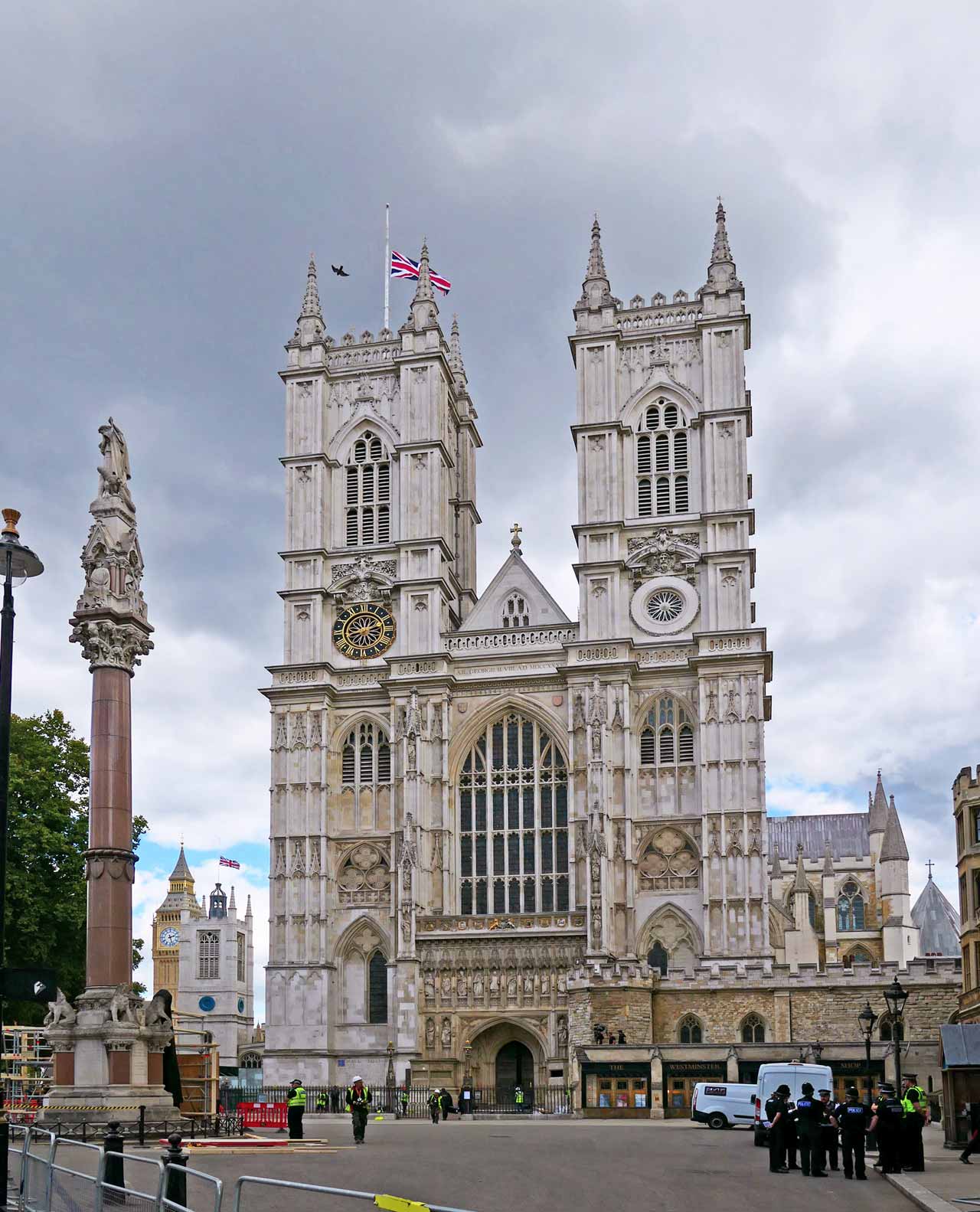
What architectural style is most prominent in the Westminster Abbey?
Westminster Abbey is predominantly characterized by the architectural style known as Gothic architecture. The Abbey’s construction began in the Gothic style in 1245 under the reign of King Henry III. The Gothic architecture of Westminster Abbey is characterized by features such as pointed arches, ribbed vaults, and intricate stone carvings. These elements create a sense of verticality and grandeur, giving the Abbey its distinctive appearance. Gothic architecture was popular during the medieval period and is known for its emphasis on height and light. It is often associated with the majestic cathedrals and churches of Europe. Westminster Abbey showcases the architectural style through its soaring arches, delicate tracery, and intricate detailing, which can be seen in its chapels, tombs, and other structural elements.
What structural engineering principles are employed in the construction of the Westminster Abbey?
There are 4 major structural engineering principles that are employed in the construction of the Westminster Abbey. Firstly, the foundation of Westminster Abbey was carefully designed to support the structure’s weight. Deep foundations, such as concrete piles or stone footings, were used to distribute the load of the building and prevent settling or subsidence. The foundation was engineered to withstand the forces exerted by the weight of the Abbey and the surrounding soil conditions. Secondly, load-bearing structures played a crucial role in constructing Westminster Abbey. Gothic architecture employed pointed arches, ribbed vaults, and flying buttresses. These elements served both aesthetic and structural purposes. The pointed arches and ribbed vaults distributed the weight of the roof and walls, allowing for taller and more spacious interiors. The flying buttresses, external structures that provided additional support, helped counteract the outward thrust of the vaulted ceilings, ensuring structural stability. Thirdly, the roofing system of Westminster Abbey was engineered to protect the building from weather elements. The high-pitched roofs were designed to shed rainwater efficiently, preventing water damage and leakage. The use of durable materials, such as stone or lead, ensured the longevity of the roof and protected the interior spaces. Lastly, incorporating architectural elements in the construction of Westminster Abbey also served structural purposes. The intricate stone carvings and decorative details added visual appeal and provided structural support. The features like pinnacles, finials, and tracery helped distribute the weight of the building and reinforced key structural points.
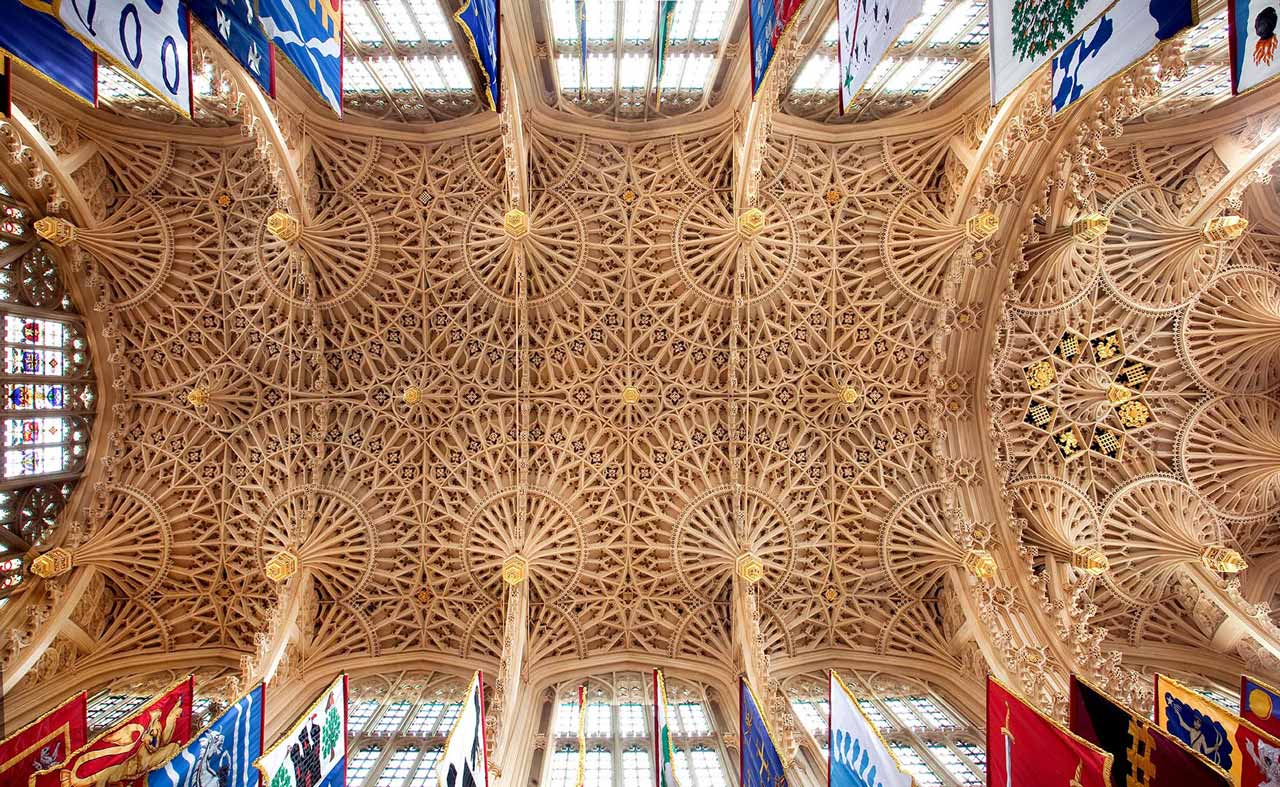
Who designed the Westminster Abbey?
The design of Westminster Abbey was a collaborative effort involving multiple architects, designers, and builders over several centuries. The key contributor to the design of Westminster Abbey was King Henry III, who initiated the church’s rebuilding in the Gothic style in 1245. Under his leadership, the Abbey underwent significant transformations, including constructing the nave, the choir, and the eastern sections. Henry III’s vision and leadership set the foundation for the architectural style and layout of the Abbey. Sir Christopher Wren designed Westminster Abbey after a fire damaged parts of the Abbey in 1694, Wren was enlisted to oversee the repairs and additions. He made important contributions, including restoring the Gothic elements and adding a new chapel and the western towers. Wren’s expertise as an architect and his meticulous attention to detail helped shape the final form of Westminster Abbey as we know it today.
What are the historical design influences visible in the Westminster Abbey?
There are four major historical design influences visible in the Westminster Abbey. Firstly, the most significant historical design influence in Westminster Abbey is the Gothic style, which emerged during the medieval period. The Abbey’s construction began in the Gothic style in the 13th century, characterized by pointed arches, ribbed vaults, and soaring spires. These features can be seen in the Abbey’s nave, choir, and transepts, showcasing the influence of medieval architecture on its design. Secondly, the Renaissance period also left its mark on the design of Westminster Abbey. During the reign of King Henry VII, the Lady Chapel was constructed in a more decorative and ornate style, reflecting the influence of Renaissance architecture. Elaborate stone carvings, intricate tracery, and a greater emphasis on symmetry and proportion are evident in this part of the Abbey. Thirdly, the Georgian era brought about changes in the interior design of Westminster Abbey. In the 18th century, the Abbey underwent renovations and additions under the supervision of Sir Christopher Wren and his successors. These alterations introduced elements of Georgian architecture, characterized by classical motifs, elegant proportions, and refined detailing. The Poets’ Corner and the West Towers showcase Georgian influences in their design. Lastly, Victorian-era renovations and restorations also influenced the design of Westminster Abbey. The Victorian period saw a revival of Gothic architecture, and the influence can be observed in the meticulous restoration work carried out during the time. Victorian additions, such as the Great West Door and the Chapter House screen, demonstrate a continuation of Gothic design principles and a reverence for historical authenticity.
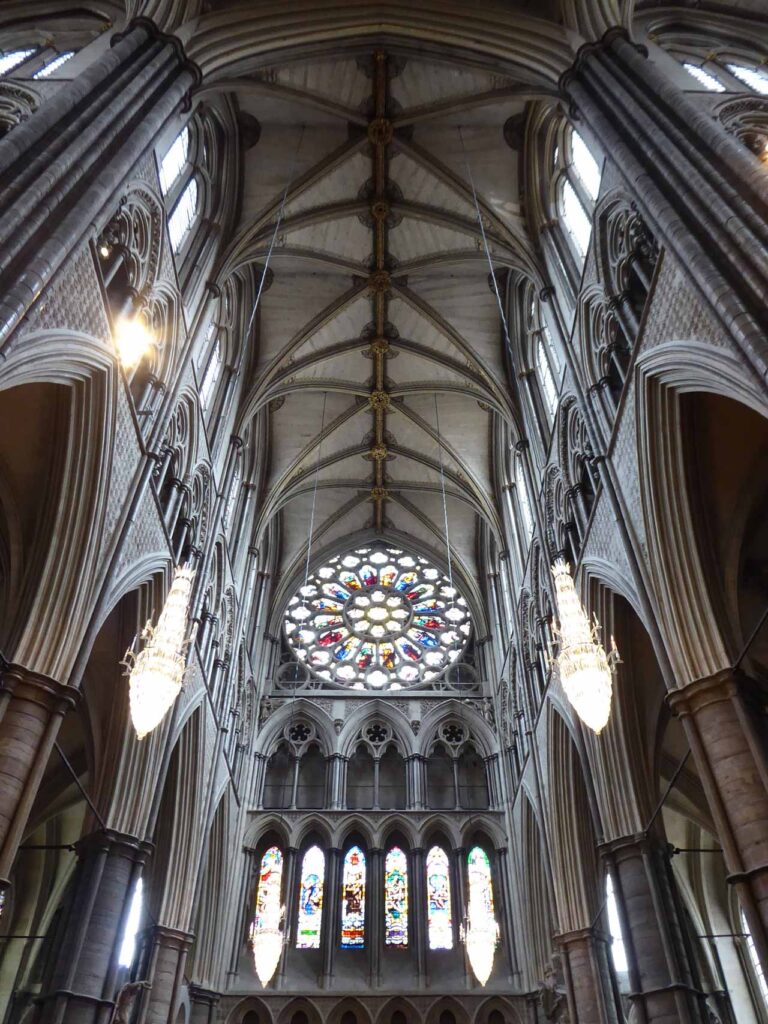
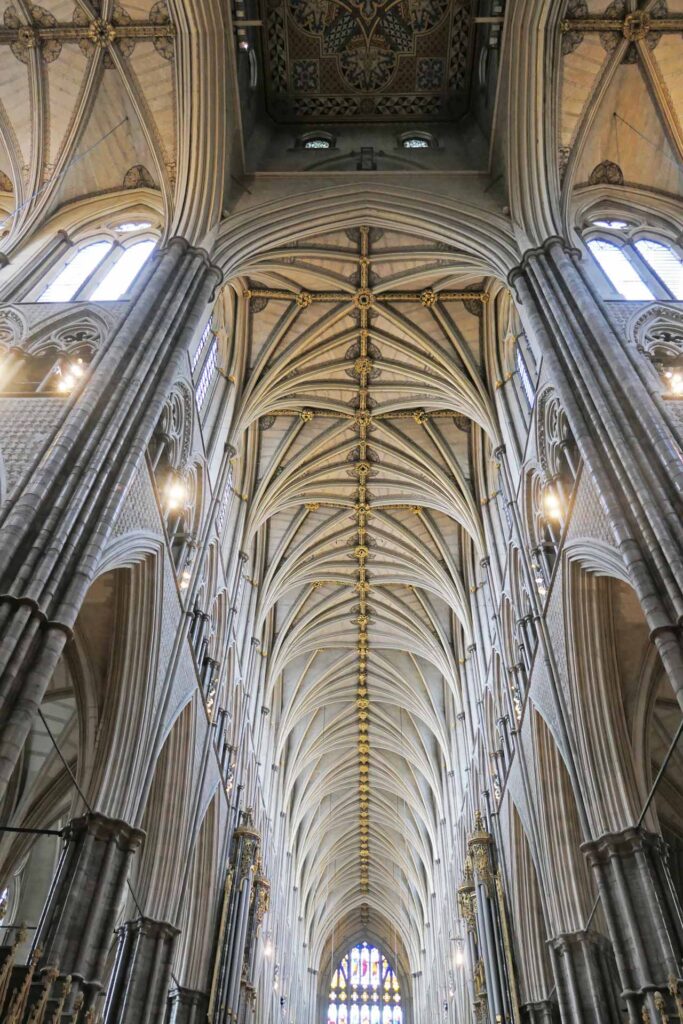
How has Westminster Abbey influenced the design of other buildings in England?
Westminster Abbey influenced the design of other buildings in Italy in 4 ways. Firstly, the Gothic architectural style of Westminster Abbey has inspired the design of many other churches and cathedrals in England. The soaring arches, ribbed vaults, and intricate tracery seen in the Abbey’s architecture set a precedent for subsequent Gothic structures, such as St. Paul’s Cathedral in London and York Minster in York, which draw upon the verticality and grandeur of Westminster Abbey’s design. Secondly, the Abbey’s influence extends beyond religious buildings to other structures. The Gothic revival movement, which gained popularity in the 19th century, was greatly influenced by Westminster Abbey. The movement sought to emulate the architectural style of the medieval period, with its pointed arches and ornate detailing. Thirdly, the historical significance of Westminster Abbey has also influenced the design of government and administrative buildings in England. The Abbey’s association with the British monarchy and its role as the site of coronations and royal burials have inspired the design of important civic structures. The Palace of Westminster, which houses the Houses of Parliament, displays Gothic architectural elements reminiscent of Westminster Abbey, emphasizing the symbolic connection between the two buildings. Lastly, Westminster Abbey’s influence can be seen in the design of commemorative and memorial structures. The Abbey’s Poets’ Corner, a burial place for notable writers and poets, has inspired similar commemorative spaces in other buildings. The South Transept of St. Paul’s Cathedral in London, known as the “Poets’ Corner of the Cathedral,” pays homage to Westminster Abbey’s tradition of honoring literary figures.
What purpose does the Westminster Abbey serve, and how does the design help?
Westminster Abbey serves as a place of worship, a symbol of national identity, and a site of historical significance in England. Westminster Abbey provides a spiritual sanctuary for religious services, ceremonies, and prayer. The design of the Abbey supports the solemnity and reverence associated with religious activities. The layout incorporates a traditional cruciform plan, with a nave, transepts, and choir, allowing for processions and orderly movement during services. The Gothic architectural elements, such as the lofty arches and stained glass windows, create a sense of awe and inspire contemplation. The space’s acoustics also contribute to the auditory experience, enhancing the beauty and impact of choral and organ music. Westminster Abbey serves as a symbol of national identity and heritage. The Abbey’s historical significance as the site of coronations, royal weddings, and burials of prominent figures has solidified its place in English history. The design of the Abbey incorporates elaborate stone carvings, sculptures, and memorial plaques that pay tribute to the country’s rich cultural and historical legacy. The Poets’ Corner commemorates popular literary figures, while the Royal Chapels house tombs and memorials of monarchs.
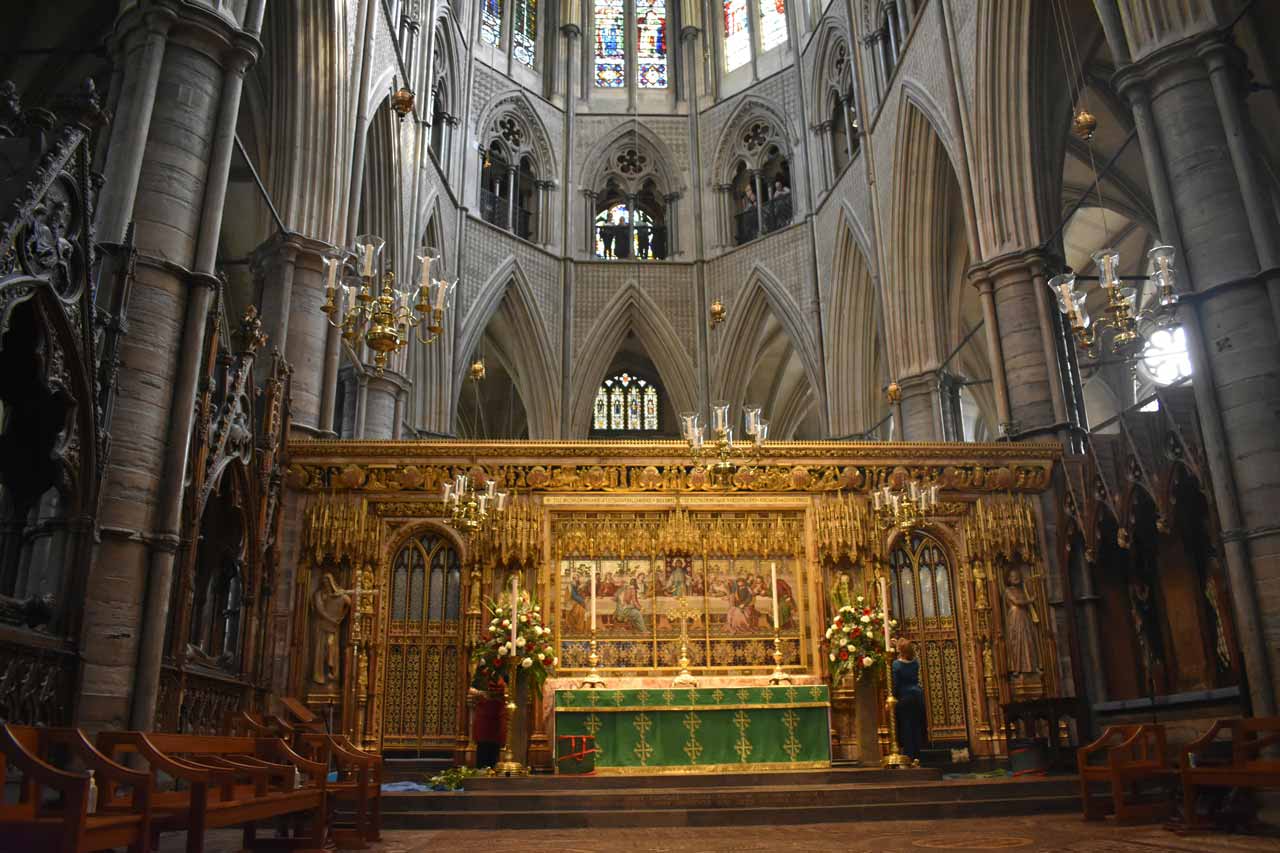
How is Westminster Abbey maintained?
Westminster Abbey’s maintenance efforts involve a combination of regular inspections, conservation work, and ongoing preservation measures. Routine inspections are conducted to identify any wear, damage, or deterioration. Trained professionals assess the condition of the Abbey’s structure, including its roofs, walls, windows, and decorative elements. These inspections help detect issues early on, allowing for timely repairs and preventive measures to be implemented. Conservation work is carried out to address specific areas or features that require attention. It involves skilled craftsmen and conservators specializing in various disciplines, such as stonemasonry, stained glass restoration, and woodwork conservation. They employ traditional techniques and materials to repair and restore the Abbey’s architectural elements, ensuring that the original design and historical authenticity are preserved. There are also ongoing preservation measures implemented to safeguard Westminster Abbey’s long-term sustainability. These include environmental controls to regulate temperature, humidity, and lighting within the building, preventing damage to delicate materials and artifacts.
How does the Westminster Abbey reflect cultural and contextual relevance in its design?
The Westminster Abbey reflects cultural and contextual relevance in its design in 4 ways. Firstly, the architectural style of Westminster Abbey aligns with the Gothic tradition, which prevailed during the medieval period. It resonates with the cultural heritage of England, as Gothic architecture was widely associated with religious structures and symbolized the power and influence of the Church. The Abbey’s pointed arches, ribbed vaults, and intricate tracery exemplify the architectural style. Secondly, the decorative elements within Westminster Abbey reflect its cultural and contextual relevance. The stone carvings, sculptures, and stained glass windows depict scenes from biblical narratives, saints, and historical figures. These artistic representations serve as visual expressions of the religious and historical importance of the Abbey. Thirdly, the spatial layout of Westminster Abbey contributes to its cultural and contextual relevance. The Abbey’s cruciform plan, with a nave, transepts, and choir, reflects the traditional arrangement of medieval churches. The layout accommodates religious rituals and services and reflects the Church’s hierarchical structure during that time. Lastly, the historical events and ceremonies that have taken place within Westminster Abbey contribute to its cultural and contextual relevance. The Abbey has witnessed numerous coronations, royal weddings, and burials of significant figures throughout English history.
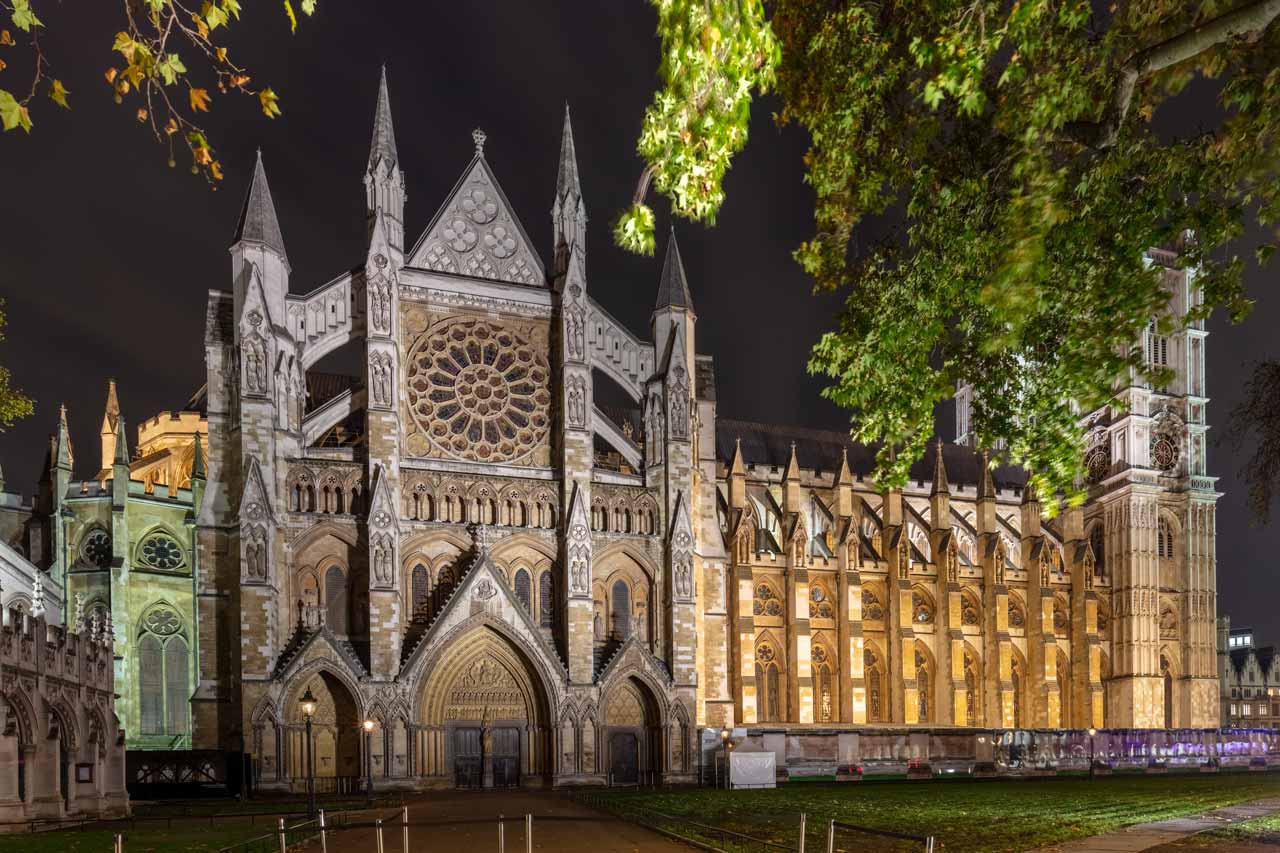
What architectural trend or movement does the Westminster Abbey represent?
Westminster Abbey represents the architectural trend of Gothic architecture, which was prominent during the medieval period. Gothic architecture emerged in Europe during the 12th century and lasted until the 16th century. It is characterized by pointed arches, ribbed vaults, flying buttresses, and intricate window tracery. These architectural features can be observed throughout Westminster Abbey, showcasing its affiliation with the Gothic movement. The pointed arches in the Abbey’s design provide structural stability while creating a visually striking effect. The ribbed vaults allow for a more efficient weight distribution, enabling the construction of lofty ceilings and spacious interiors. The flying buttresses and external supports that counterbalance the forces exerted on the walls contribute to the grandeur of the building while ensuring its stability. The intricate tracery in the stained glass windows of Westminster Abbey is another characteristic feature of Gothic architecture. The delicate stone tracery divides the glass panels into intricate patterns, allowing for the play of light and color within the interior.
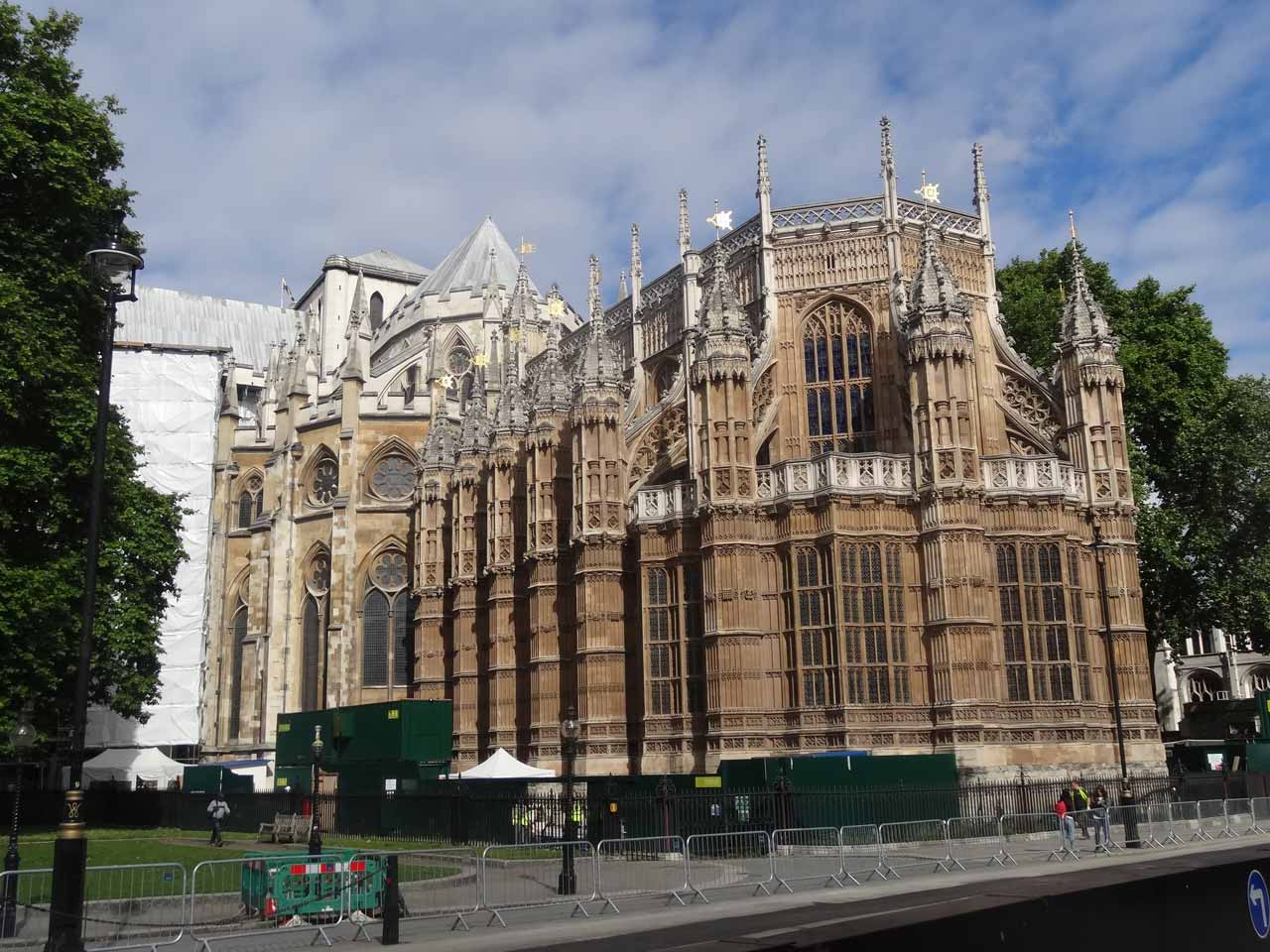
What are the challenges faced during the restoration of the Westminster Abbey?
There are four major challenges faced during the restoration of the Westminster Abbey. Firstly, one of the primary challenges is striking a balance between preservation and necessary repairs during restoration. The Abbey’s delicate stone carvings, stained glass windows, and intricate details require careful handling to ensure their preservation while addressing structural issues. Restoration teams must employ specialized techniques and materials to maintain the authenticity and historical integrity of the Abbey while resolving any deterioration or damage. Secondly, ensuring historical accuracy is a key challenge during restoration. Westminster Abbey has evolved over the centuries, incorporating different architectural styles and modifications. The restoration process requires extensive research and documentation to understand various elements’ original intent and historical context. The information guides the restoration efforts to ensure that alterations or additions align with the Abbey’s original design and historical significance. Thirdly, managing funding is a significant challenge in restoring Westminster Abbey. The extensive scope of work and the need for specialized expertise and materials can result in substantial costs. Securing sufficient funds from various sources, such as government grants, private donations, and visitor revenue, is crucial to support the restoration projects and ongoing maintenance of the Abbey. Lastly, minimizing disruption to ongoing activities within Westminster Abbey poses a challenge during restoration. The Abbey remains an active place of worship, hosting religious services, ceremonies, and tourist visits. Restoration work needs to be carefully planned and coordinated to minimize the impact on these activities. Temporary closures, alternative access routes, and effective communication with stakeholders are essential to ensure the Abbey’s smooth functioning during restoration.
How does Westminster Abbey comply with contemporary safety and accessibility standards?
The Westminster Abbey complies with contemporary safety and accessibility standards in 4 ways. Firstly, safety features have been incorporated into the Abbey’s design and operations. Fire detection and suppression systems are in place to minimize fire risk and protect the historic structure. Emergency exits and evacuation plans are marked and regularly tested to ensure visitor safety. The Abbey adheres to building codes and regulations related to structural integrity and public safety, conducting periodic inspections to identify and address any safety issues. Secondly, Westminster Abbey has made efforts to improve accessibility for all visitors. It provides accessible entrances with ramps or lifts to enable individuals with mobility challenges to enter the building. There are accessible routes inside that are available to navigate through the Abbey, allowing wheelchair users and those with limited mobility to explore different areas. Accessible seating areas are provided for worship services and ceremonies. The Abbey also offers information and resources in accessible formats, such as braille or large print, to ensure inclusivity. Thirdly, restroom facilities that comply with contemporary accessibility standards are available within Westminster Abbey. These facilities are designed to accommodate individuals with disabilities, providing features such as accessible toilets, grab bars, and adequate space for maneuverability. The Abbey also offers baby-changing facilities to cater to the needs of families visiting with infants. Lastly, Westminster Abbey provides trained staff and volunteers knowledgeable about accessibility and safety concerns. They can assist visitors, provide guidance, and address any specific requirements. The Abbey also offers educational materials and guided tours highlighting accessibility features and safety information, promoting awareness and understanding among visitors.
Are there any specific tours for architects or architecture enthusiasts to visit the Westminster Abbey?
Yes, Westminster Abbey offers specific tours tailored for architects and architecture enthusiasts. The Architectural Tour provides a focused exploration of the Abbey’s architectural features and historical significance. It is led by knowledgeable guides and offers detailed insights into the Gothic architecture of the Abbey, highlighting its iconic elements such as pointed arches, ribbed vaults, and stained glass windows. Architects and architecture enthusiasts have the opportunity to learn about the construction techniques employed throughout the Abbey’s history and to appreciate the intricate details and craftsmanship of the building.
What lessons can architects learn from the design and construction of the Westminster Abbey?
There are four lessons that architects can learn from the design and construction of the Westminster Abbey. Firstly, Westminster Abbey teaches architects about the importance of structural integrity. The Abbey’s enduring presence for centuries is a testament to its robust construction. Architects can learn from using pointed arches, ribbed vaults, and flying buttresses, which provide stability and distribute weight effectively. These elements showcase the significance of sound structural design in creating long-lasting and visually impressive buildings. Secondly, the craftsmanship evident in Westminster Abbey serves as an inspiration to architects. The intricate stone carvings, delicate tracery in stained glass windows, and meticulous attention to detail highlight the value of skilled craftsmanship. Architects can learn from Abbey’s craftsmanship by emphasizing the importance of precision, quality materials, and the integration of artistry into architectural design. Thirdly, the adaptability of Westminster Abbey offers a valuable lesson. The Abbey has evolved over centuries, incorporating various architectural styles and modifications while maintaining its historical integrity. Architects can learn the importance of designing structures that adapt to changing needs and accommodate future alterations without compromising the original design intent or cultural significance. Lastly, Westminster Abbey emphasizes the significance of historical context in architecture. Architects can learn from the Abbey’s ability to blend different architectural styles harmoniously across different periods while maintaining a cohesive aesthetic.
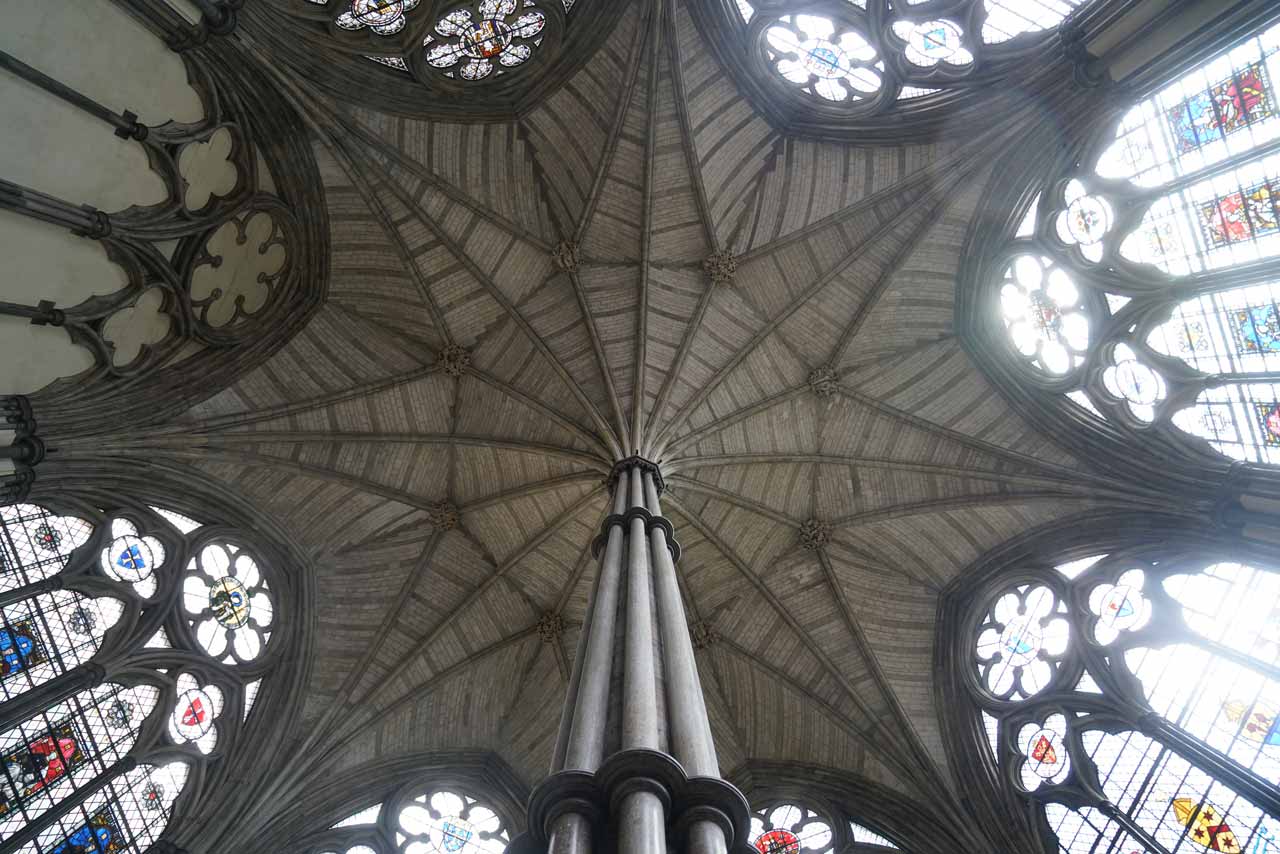
What are the best architectural landmarks to visit as an architect?
Listed below are the best architectural landmarks to visit as an architect:
- Sagrada Familia: The Sagrada Familia is an iconic basilica located in Barcelona, Spain. Designed by popular architect Antoni Gaudí, it is known for its unique and intricate architectural style that combines Gothic and Art Nouveau influences. The basilica has been under construction since 1882 and is still ongoing, making it a fascinating example of long-term architectural vision and dedication. Visitors can admire the stunning facades, soaring towers, and intricate details that make the Sagrada Familia a must-visit landmark for architects and enthusiasts alike.
- Taj Mahal: The Taj Mahal is a UNESCO World Heritage site in Agra, India. Built in the 17th century by Emperor Shah Jahan as a mausoleum for his beloved wife, it is considered one of the most beautiful examples of Mughal architecture. The Taj Mahal features intricate marble inlay work, symmetrical design elements, and a stunning white marble exterior. Its harmonious proportions and elegant details make it a masterpiece of architectural craftsmanship, attracting millions of visitors annually.
- Sydney Opera House: The Sydney Opera House is an iconic performing arts center in Sydney, Australia. Designed by Danish architect Jørn Utzon, it is known for its distinctive sail-like roof structure. The complex houses multiple performance venues and symbolizes modern expressionist architecture. Its innovative design and engineering challenges make it a significant landmark in architectural history. Visitors can take guided tours to explore the interior spaces and learn about the architectural concepts behind this world-famous structure.
- Guggenheim Museum Bilbao: The Guggenheim Museum Bilbao is a contemporary art museum in Bilbao, Spain. Designed by architect Frank Gehry, it is recognized for its striking, curvilinear form and titanium-clad exterior. The museum’s unconventional design pushes the boundaries of traditional architecture, creating a visually captivating and highly acclaimed landmark. Inside, visitors can experience a diverse collection of modern and contemporary art. The Guggenheim Museum Bilbao has revitalized the city, symbolizing urban regeneration through architecture.
- Fallingwater: Fallingwater is a residential house located in Mill Run, Pennsylvania. Designed by architect Frank Lloyd Wright, it is an iconic example of organic architecture that integrates seamlessly with its natural surroundings. The house is built over a waterfall and features cantilevered balconies and open spaces that blur the boundaries between indoors and outdoors. Fallingwater showcases Wright’s principles of harmony between architecture and nature, making it a significant landmark for architects interested in sustainable design.
- St. Peter’s Basilica: St. Peter’s Basilica is a major basilica in Vatican City, Rome. Designed by known architects, including Michelangelo and Gian Lorenzo Bernini, it is the largest church in the world and a masterpiece of Renaissance and Baroque architecture. The basilica’s grandeur is evident in its vast dome, intricate mosaics, and numerous works of art. Architects can appreciate the meticulous detailing and craftsmanship that went into creating this architectural marvel. Visitors can explore the interior, including the famous St. Peter’s Square, and marvel at its architectural and artistic splendor.
- The Louvre: The Louvre is a world-known art museum in Paris, France. Originally a medieval fortress, it was transformed into a grand palace and later became a museum. The Louvre is celebrated for its iconic glass pyramid entrance, designed by architect I.M. Pei. The museum houses an extensive collection of art and historical artifacts, including famous works such as the Mona Lisa. Architects can appreciate the museum’s architectural evolution, from its historic roots to the modern additions that have transformed it into a cultural landmark.
- Burj Khalifa: The Burj Khalifa is a skyscraper in Dubai, United Arab Emirates. Designed by the architectural firm Skidmore, Owings & Merrill, it is the tallest building in the world, standing at 2,717 feet (828 meters). The Burj Khalifa’s sleek and futuristic design features a stepped silhouette and a reflective glass facade. Its engineering marvels, such as the advanced structural systems and high-speed elevators, make it an impressive landmark for architects interested in tall building design. Visitors can enjoy panoramic views of Dubai from the observation decks on the upper floors.
- The Parthenon: The Parthenon is an ancient temple atop the Acropolis hill in Athens, Greece. Built in the 5th century BCE, it symbolizes classical Greek architecture and is one of the most influential buildings in Western history. The Parthenon showcases the Doric order with its iconic columns and pediments adorned with marble sculptures. Its harmonious proportions and refined architectural details demonstrate the principles of balance and symmetry. Architects can study the Parthenon’s design to understand the foundations of classical architecture and its enduring impact on architectural aesthetics.
- The Great Wall of China: The Great Wall of China is an ancient fortification that stretches across northern China. It is an architectural marvel and a UNESCO World Heritage site built over centuries. The wall showcases various construction techniques, including brick, stone, and rammed earth. Its strategic design incorporates watchtowers, battlements, and defensive features. The Great Wall’s vast scale and historical significance make it a remarkable landmark for architects interested in the intersection of architecture and military engineering. Visitors can explore different sections of the wall and admire the panoramic views of the surrounding landscapes.


